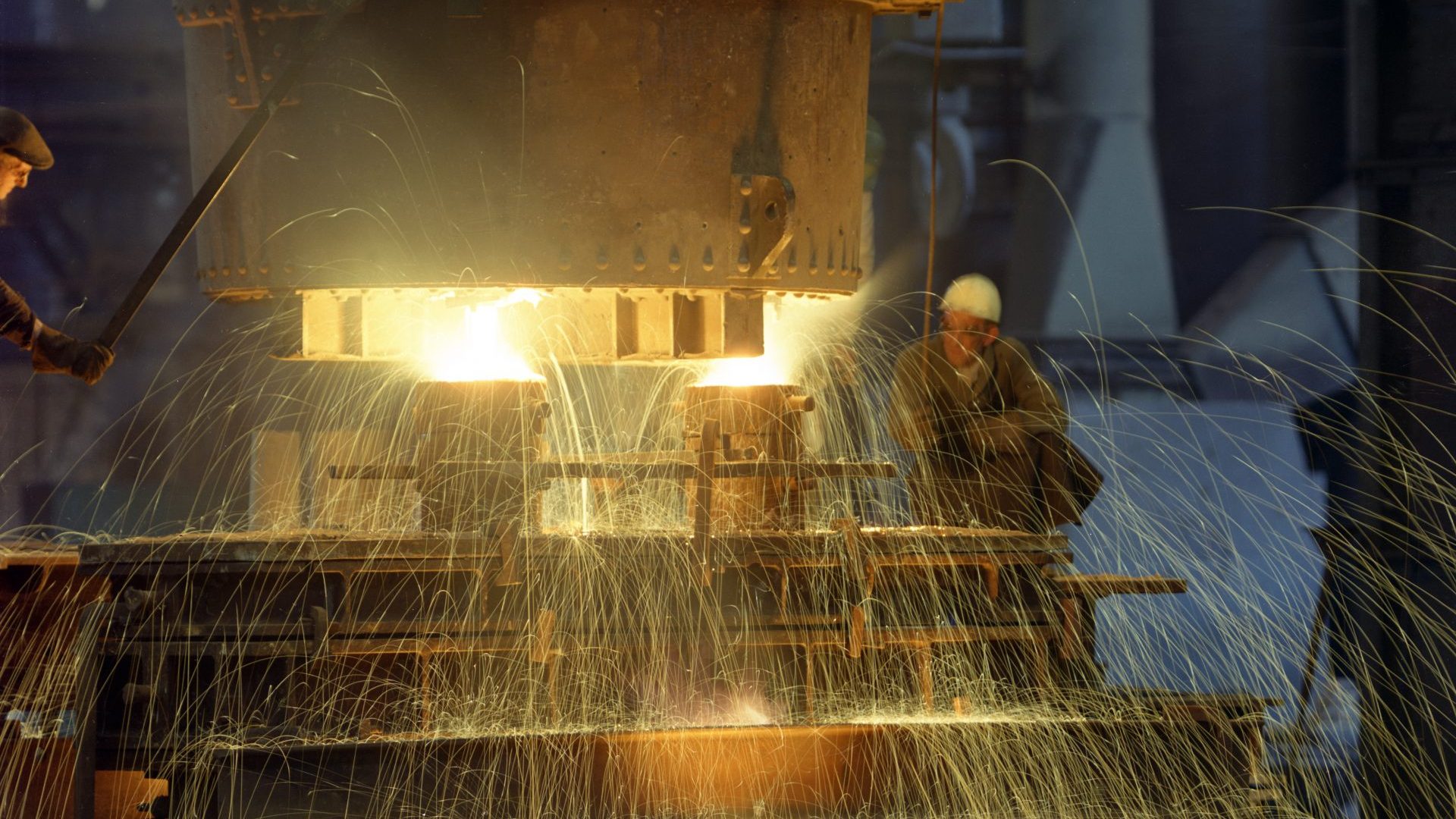The factory where my dad worked still forms an indelible part of my memory. A six-storey chunk of brick and steel, it was built in 1905, and topped with a turquoise dome made of copper, amid Arts & Crafts masonry. It sucked a large part of the local population through its gates at 6am each morning and spat them out richer by 2pm, as the next shift clocked on.
When there were strikes among the lorry drivers, the actual owner of the factory would bring a crate of Guinness down to the loading bay, hand out the bottles, sit on the crate and negotiate. When it closed, during the deep recession Margaret Thatcher deliberately induced in the 1980s, my father’s workmates understood it was the end not just of an era but of a lifestyle.
Forty years later, governments all over the western world are trying to bring something of that lifestyle back. Joe Biden’s CHIPS Act and Inflation Reduction Act are explicitly designed to reindustrialise America at the high end; the European Union is trying to emulate and collaborate with the US effort. Britain, of course, is standing at the sidelines carping about protectionism – but not for long.
Labour has promised to make the UK economy the fastest-growing in the G7 within five years of taking office, and has ambitious plans to promote investment in manufacturing. Its economic mission statement contains detailed targets; it has promised to set up a statutory industrial strategy council.
But I still don’t know the answer to a very basic question, which has bugged me on and off for 40 years: how would we persuade the firm that vacated my dad’s factory to restart manufacturing in Britain again, on a significant scale?
The company that owned it, Volex, is today a thriving global electronics manufacturer, with 19 factories across Malaysia, Thailand, Poland, Mexico, India, Turkey, Romania, Canada and China. But its UK production facilities are small by comparison. Its owners made an inspired choice when they specialised in cables, plugs and wires – everything in the world is now connected with them. But that turned out to be good news for Tijuana and Suzhou, not Lancashire.
So what could Labour do to bring secure, well-paid manufacturing jobs back to the UK in large enough numbers to matter?
The first thing to recognise is: we’re an outlier. Manufacturing peaked across the G7 countries in the mid-1960s, but our political elites – from Thatcher to Tony Blair – decided to do de-industrialisation hard and long. As a result, while Germany and Japan still have manufacturing sectors contributing 20% of their GDP, and Italy 17%, in Britain the figure is 9.7%. We have the smallest manufacturing sector in the G7 and, since 1970, ours is shrinking the fastest.
This, in turn, has restricted the UK’s ability to haul itself out of recessions. Manufacturing, even at the high end, is a relatively low-profit business but one of the sure-fire drivers of productivity. For an economy like ours, which has borrowed heavily and become highly reliant on house price growth and consumer credit, only a productivity miracle will provide the escape hatch.
Problem is, we’ve already had one, with output per hour in UK manufacturing rising 150% since 1997. Likewise, when it comes to research and development, that other sure-fire driver of high-value growth, manufacturing already accounts for two-thirds of the UK’s spend. Our manufacturing sector is lean and mean, but too small to drive a macro-economic turnaround.
Economically, the reasons for Britain’s sustained de-industrialisation are clear. Global manufacturers will invest in plants where labour costs and business taxes are low, and whose currencies are soft enough to provide export advantage. Britain has none of the above. But they will also acquire existing businesses in the global north to gain expertise, access to markets and security of supply.
To start such businesses, you need capital and know-how – and Britain is historically short of both. To economists, it’s not cheap labour that’s the game-changer but high savings. High savings provide cheap and abundant capital, and it’s no surprise that high-saving societies like Korea, Japan, Germany and China have been the winners in the global manufacturing race.
There are solutions – but none of them have the slightest chance of boosting the UK to pole growth position in the G7 within five years. Paradoxically, the easiest way to achieve Labour’s growth target would be to boost inward migration beyond its already all-time high: but that’s not going to happen.
So Labour is going to have to get much more specific. If there’s not enough capital to drive a start-up boom in manufacturing, or the expansion of existing plants, then a mixture of state investment and regulatory change to unlock the money invested in pension funds are the two most obvious measures. Plus, rapid deregulation of infrastructure planning, so that long-term money flows into the UK renewables sector.
It’s obvious from its mission statements that Labour understands this. Knowing how to do it is a whole different ball game. Because in addition to factories and skills, we’ve lost the muscle memory of industrial strategy, and the institutions needed to make it happen.
We now know that the deindustrialisation mania of the 1980s and 90s impoverished our country and left us strategically insecure. Learning how to reindustrialise has to begin, like all great journeys of understanding, with the frank admission of what we don’t know.




